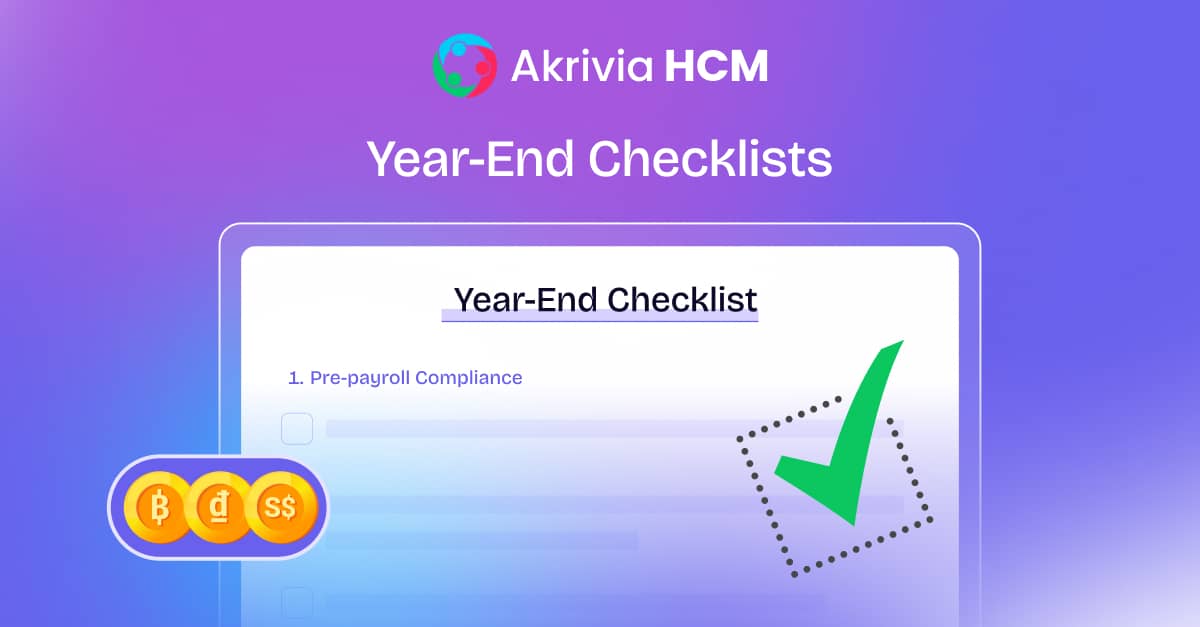Country: India
Compliance category: Income Tax
Regulatory Information:
Regulation: The Income-Tax Bill, 2025
Notification/Circular No: Bill No. 24 of 2025
Notification date: February 13, 2025
Source: https://incometaxindia.gov.in/Pages/income-tax-bill-2025.aspx
Updates in Compliance:
Summary:
On February 13, 2025, the Hon’ble Finance Minister introduced the new Income Tax Bill 2025 (‘the Bill’) in the Parliament. The Bill, consisting of 536 clauses within 23 chapters and 16 schedules, seeks to simplify the existing Income Tax Act, 1961 (‘the Act’). Although the fundamental concepts remain the same, the Bill offers a simplified tax code that is less complex, straightforward and easier for salaried taxpayers to comprehend and interpret.
Effective Date: If passed, the Bill will come into effect on April 1, 2026
Key Proposals of the Bill:
Revisions impacting payroll compliances are summarised below:
1. Redefining the Fiscal Calendar:
- Replaces the former “previous year” and “assessment year” with a unified “tax year”.
- It will be a 12-month period within a financial year.
- This harmonises the terminology with global practices, easing cross-border business operations.
- It eliminates longstanding confusion between overlapping financial years under the old regime.
2. Changes in Section 10 of the Act – ‘Exemptions’:
- Reduced the word count of Section 10 from approximately 30,000 to about 13,500.
- Exemptions organised into 6 Schedules, each for specific taxpayer categories.
- Redundant provisions removed to eliminate clutter.
- Simplified tables in each Schedule with columns for – income eligible for exemption, eligible persons and applicable conditions.
| Section Number of the Act | Section heading as per the Act | Schedule number as per the Bill |
| 10(5) | The value of any travel concession or assistance. | Schedule III (Table: S. No. 8) |
| 10(10CC) | Income in the nature of a perquisite | Schedule III (Table: S. No. 10) |
| 10(10D) | Any sum received under a life insurance policy, including the sum allocated by way of bonus on such policy. | Schedule II (Table: S. No. 2) |
| 10(11) | Any amount payable from a provident fund to which the Provident Funds Act, 1925 (19 of 1925) applies, or from any other provident fund set up by the Central Government and notified by it in this behalf. | Schedule II (Table: S. No. 3) |
| 10(11A) | Any payment from any account opened in accordance with the Sukanya Samriddhi Account Rules, 2014 made under the Government Savings Promotion Act, 1873 (5 of 1873). | Schedule II (Table: S. No. 5) |
| 10(12) | The accumulated balance due and becoming payable to an employee participating in a recognised provident fund to the extent provided in paragraph 8 of Part A of the Fourth Schedule | Schedule II (Table: S. No. 4) |
| 10(12A) | Any payment from the National Pension System Trust. | Schedule II (Table: S. No. 6) |
| 10(12B) | Any payment from the National Pension System Trust under the pension scheme referred to
in section 80CCD. |
Schedule III (Table: S. No. 4) |
| 10(12C) | Any payment from the Agniveer Corpus Fund to a person enrolled under the Agnipath Scheme or to his nominee. | Schedule II (Table: S. No. 7) |
| 10(13) | Any payment from an approved superannuation fund. | Schedule II (Table: S. No. 8) |
| 10(13A) | Any special allowance from employer. | Schedule III (Table: S. No. 11) |
| 10(14)(i) | Any special allowance or benefit. | Schedule III (Table: S. No. 12) |
| 10(14)(ii) | Any other allowance. | Schedule III (Table: S. No. 13) |
| 10(15)(i) | Income by way of interest, premium on redemption or other payment on such securities, bonds, annuity certificates, savings certificates, other certificates issued by the Central Government and deposits. | Schedule II (Table: S. No. 11) |
| 10(15)(iic) | Any interest income falling under clause (15)(iic) of section 10 | Schedule III (Table: S. No. 38) |
| 10(15)(iii) | Any interest income covered under clause (15)(iii) of section 10. | Schedule II (Table: S. No. 16) |
3. Revisions of section ‘Salaries’:
- Simplified language by reducing the word count from 4,401 to 3,420.
- Reduced legal and technical jargon.
- All salary-related deductions are now merged under ‘Salaries’.
- Therefore, taxpayers won’t need to refer separate chapters.
- Simplified language with clear definitions for terms like Perquisite, Profit in lieu of salary, and Standard Deduction, each in separate clauses.
- Some provisions have been moved to the Rules, and redundant sections have been removed to enhance readability.
Below find the revised clause numbers in the Bill about the Salaries:
| Section Number of the Act | Section heading as per the Act | Clause number as per the Bill |
| 15 | Salaries | 15 |
| 16 | Deductions from salaries | 19 |
| 17(1) | “Salary”, “perquisite” and “profits in lieu of salary” defined. | 16 |
| 17(2) | “Salary”, “perquisite” and “profits in lieu of salary” defined. | 17 |
| 17(3) | “Salary”, “perquisite” and “profits in lieu of salary” defined. | 18 |
4. Changes in Chapter VIA of the Act – ‘Deductions’:
- Chapter for Deductions renumbered to VIII.
- Section 80C deductions are now organised in a simplified Schedule XV, listing eligible savings instruments.
- The deduction limit remains clearly stated within the section.
- The Schedule XV provides a clear, easy-to-understand breakdown of eligible deductions.
- Limit applicable for these deductions has been merged in Clause 123.
- Deduction for donations section revised to segregate based on eligible percentages (100% and 50%).
- There are no policy changes, only clearer categorisation.
- Sections 80TTA and 80TTB (deductions on interest earned from savings accounts) have been merged into a single clause.
- The eligibility criteria and deduction limits for different categories of assesses are now clearer.
Below find the revised clause numbers in the Bill regarding deductions:
| Section Number of the Act | Section heading as per the Act | Clause Number as per the Bill |
| 80C | Deduction for insurance premia, deferred annuity, contributions to provident fund, etc. | 123 |
| 80CCD | Deduction in respect of employer contribution to pension scheme of Central Government | 124 |
| 80CCH | Deduction in respect of contribution to Agnipath Scheme. | 125 |
| 80D | Deduction in respect of health insurance premia. | 126 |
| 80DD | Deduction in respect of maintenance including medical treatment of a dependant who is a person with disability. | 127 |
| 80DDB | Deduction in respect of medical treatment, etc. | 128 |
| 80E | Deduction in respect of interest on loan taken for higher education. | 129 |
| 80EE | Deduction in respect of interest on loan taken for certain house property | 130 |
| 80EEA | Deduction in respect of interest on loan taken for certain house property. | 131 |
| 80EEB | Deduction in respect of purchase of electric vehicle. | 132 |
| 80G(5) | Deduction in respect of donations to certain funds, charitable institutions, etc. | 354(1) |
| 80G(5)(Proviso) | Deduction in respect of donations to certain funds, charitable institutions, etc. | 354(2) |
| 80GG | Deductions in respect of rents paid. | 134 |
| 80TTA | Deduction for Interest on Deposits | 153 |
| 80U | Deduction in case of a person with disability | 154 |
| 87A | Rebate of income-tax in case of certain individuals. | 156 |
| 89 | Relief when salary, etc., is paid in arrears or in advance | 157 |
Below sections of deductions have been merged in the Bill:
| Section Number of the Act | Section heading as per the Act |
| 80CCE | Limit on deductions under sections 80C, 80CCC and 80CCD |
| 80TTB | Deduction in respect of interest on deposits in case of senior citizens. |
For everyone’s ease, Income Tax Authorities have released the following:
- Income Tax Bill navigator
- Utility to check Section of Income Tax Act, 1961 to corresponding Clause in Income Tax Bill, 2025
- General and Section wise FAQs
Our Analysis:
The Bill marks a watershed moment in India’s fiscal policy as it aims to overhaul India’s tax framework, replacing the six-decade-old Income Tax Act of 1961.
This reform seeks to be “concise, lucid, easy to read and understand” with incorporation of 39 more tables and use of formulae where required.
The Bill along with other sections simplifies compliance for employers and Individuals by consolidating salary-related provisions, clarifying exemptions, and organizing deductions like Section 80C into a more structured Schedule XV, making it easier for employers to compute and remit accurate taxes monthly.
With clearer definitions and simplified rules, payroll professionals can expect fewer errors in tax filings and deductions. The Bill is not just a legislative update – it’s a significant step toward a transparent, modernizing India’s tax system.





